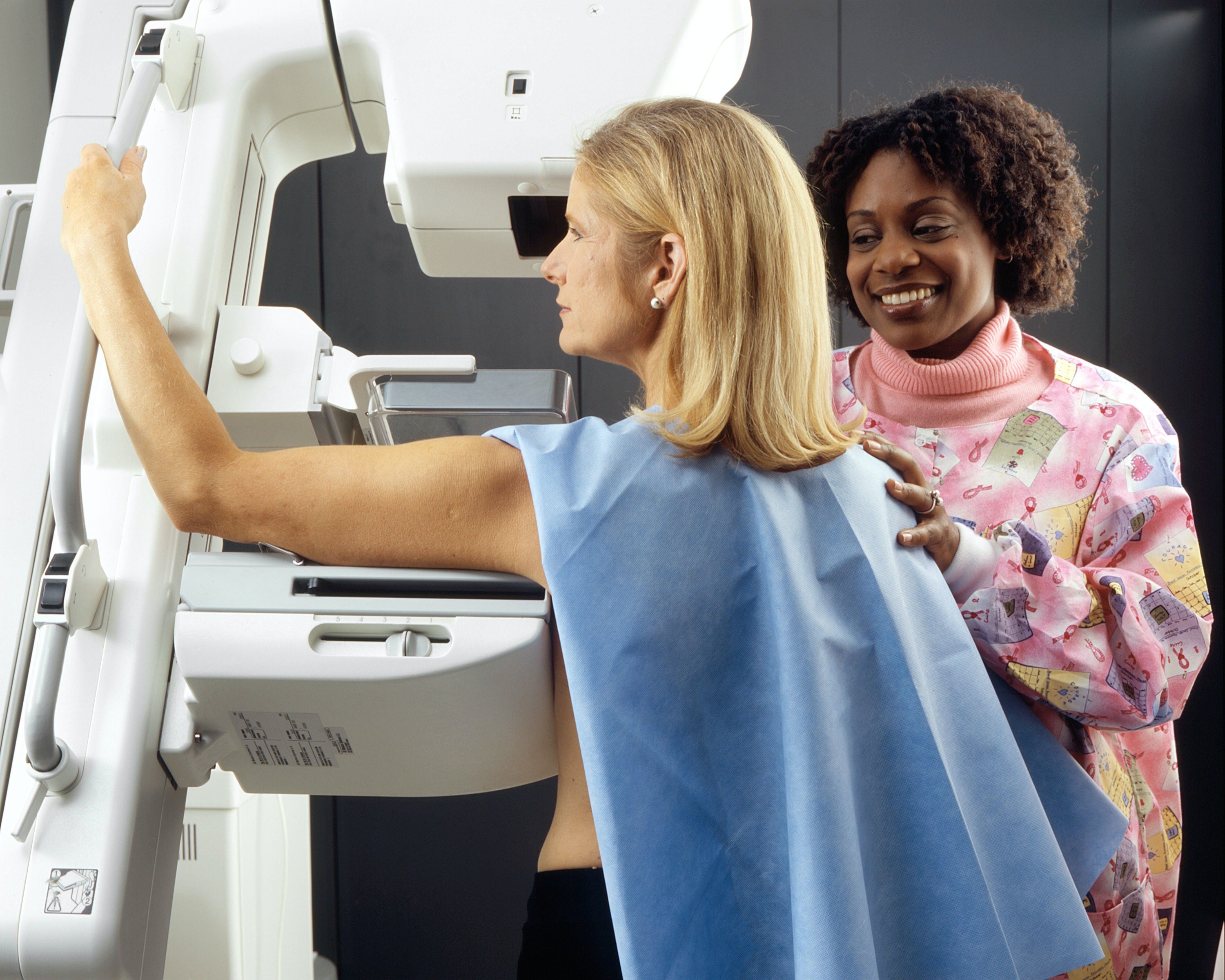Schedule One of the Best Checkups in Your Life
November 2, 2022
By: Mark Ralston
Categories: Breast Health
A Step-by-Step Guide to What a Mammogram Is and How It's Done
Let’s face it: getting a mammogram is not fun. But it is important. It could save your life.
A mammogram is used to check for lesions or other abnormalities in the breast. Mammograms are the most effective way to screen for breast cancer in women at average risk of developing the disease. (They are also used to screen women at high risk, but the testing schedule may be different). In this blog, you will find answers to questions you may have about getting a mammogram and the benefits of regular screening. Read on to learn more about what a mammogram is, why you need one, how frequently you should get one and more.
What is a mammogram?
A mammogram is a non-invasive medical procedure in which images of the inside of the breast are created using low-dose x-rays and reviewed by a specially trained provider. The procedure is used to check for breast cancer, which affects 1-in-8 women during their lifetime. Mammography is useful because structures in the breast, including the lesions caused by tumors, are relatively easy to see using x-rays. This means mammography can be used to detect a breast cancer tumor early in its development, when treatment is most likely to be successful. Mammograms usually take only a few minutes. During the procedure, an x-ray machine sends several images of your breast to the doctor. The doctor then uses special software to assist in “reading” the images. The software is designed to highlight abnormalities that may need further examination.
Why You Need to Have a Mammogram
There are two primary ways that breast cancer is found. One is by feel: a noticeable lump forms in the breast. The other way is through mammography. Both are important, and women should perform a simple breast self-exam in the shower or bath once a month. Mammography is important because it can often detect a tumor long before it is large enough to feel. That matters because the earlier treatment begins, the more successful and less disruptive it is likely to be. Early detection, for example, may allow the cancer to be removed by lumpectomy, a surgical procedure that spares healthy tissue and preserves the breast, rather than mastectomy, which removes the whole breast. Early detection may also allow for effective treatment without the need for radiation therapy or chemotherapy. Mammography may also be used to monitor a slow-growing cancer, especially in older women whose risk of dying from the cancer is low.
How Often Should You Get a Mammogram?
It depends on the woman’s age and level of risk. For women at average risk, the recommendation generally is for annual screening to start at age 40 and discontinue when the woman’s life expectancy is less than five years. Women at higher risk – such as those with a personal or family history of breast cancer, dense breast tissue or genetic mutation associated with increased risk of breast cancer – may need a more aggressive screening schedule. It’s important to choose a primary care physician you trust to guide you and refer you to a specialist if needed.
Benefits of Getting a Mammogram
The most important benefit of getting a regular mammogram is that it may save your life. A mammogram is a very accurate and effective way of detecting breast cancer. A regular mammogram can detect breast lesions that are small enough to be easily removed by surgery. Mammography is the best method of detection we currently have.
Final Words
If you are getting a mammogram, you should know that you will probably experience some discomfort. Your breast must be compressed in order to get good images. Some women find this compression more uncomfortable than others. Discomfort may persist after the procedure is over. You may be able to ease the discomfort by using a cold compress, taking an over-the-counter pain reliever, and avoiding strenuous activities such as running. Your doctor or breast health nurse navigator can provide suggestions tailored to your own personal needs and lifestyle. If you have any questions about getting a mammogram or about the procedure itself, please talk to your doctor or nurse.
Remember to stay positive and focus on this core truth: the key to beating breast cancer is catching it early. And the key to catching it early is getting your mammogram.



